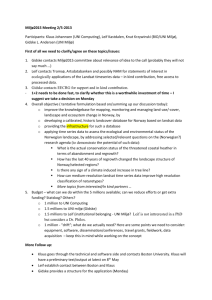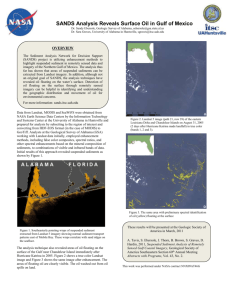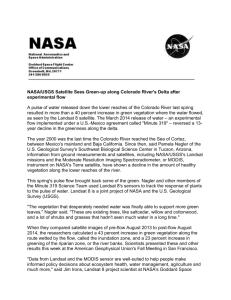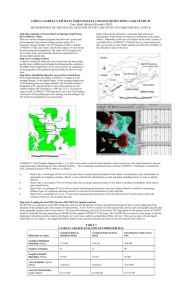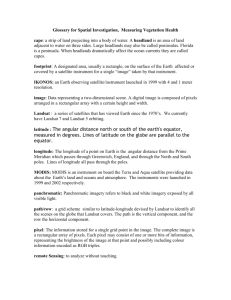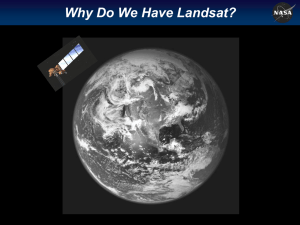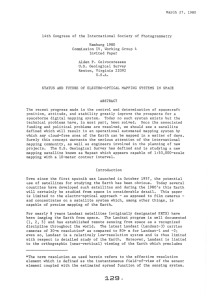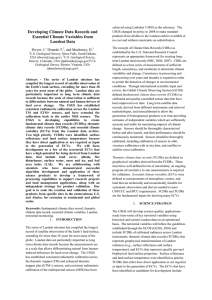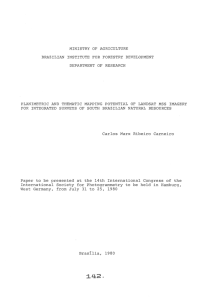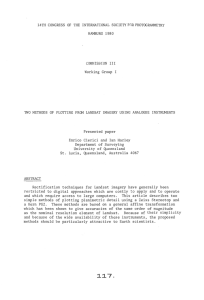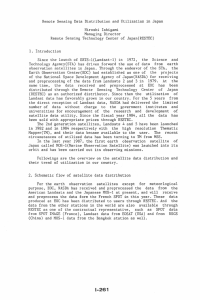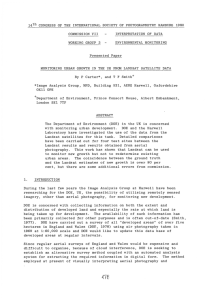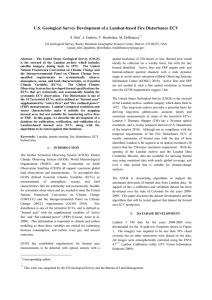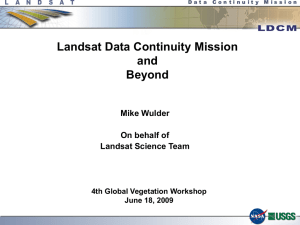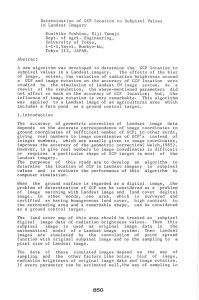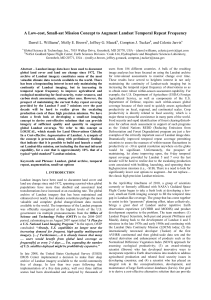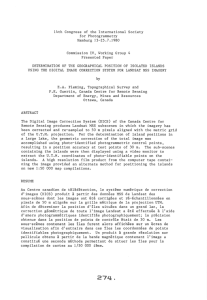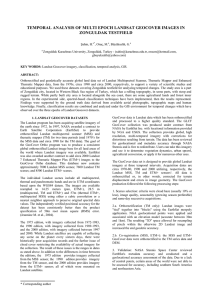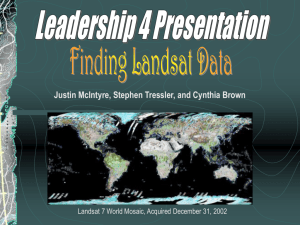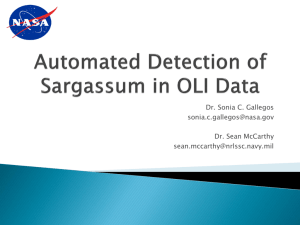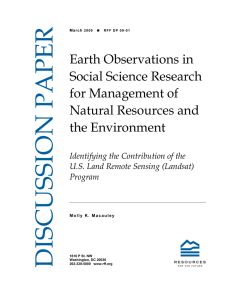Template for project description for Research Projects
advertisement
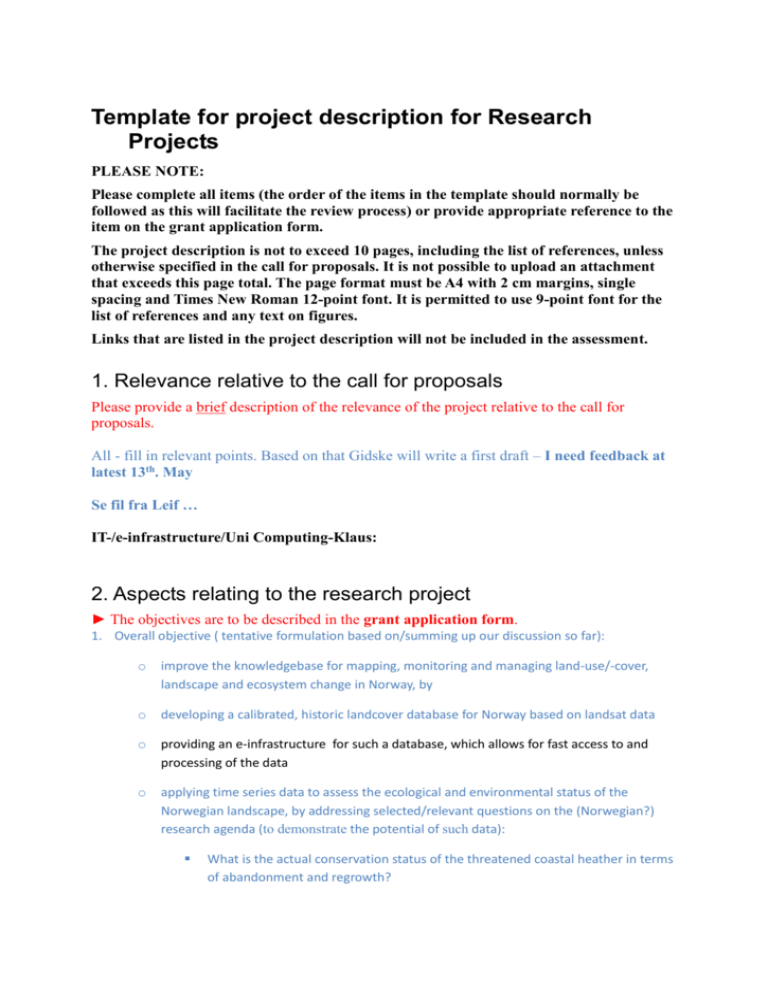
Template for project description for Research Projects PLEASE NOTE: Please complete all items (the order of the items in the template should normally be followed as this will facilitate the review process) or provide appropriate reference to the item on the grant application form. The project description is not to exceed 10 pages, including the list of references, unless otherwise specified in the call for proposals. It is not possible to upload an attachment that exceeds this page total. The page format must be A4 with 2 cm margins, single spacing and Times New Roman 12-point font. It is permitted to use 9-point font for the list of references and any text on figures. Links that are listed in the project description will not be included in the assessment. 1. Relevance relative to the call for proposals Please provide a brief description of the relevance of the project relative to the call for proposals. All - fill in relevant points. Based on that Gidske will write a first draft – I need feedback at latest 13th. May Se fil fra Leif … IT-/e-infrastructure/Uni Computing-Klaus: 2. Aspects relating to the research project ► The objectives are to be described in the grant application form. 1. Overall objective ( tentative formulation based on/summing up our discussion so far): o improve the knowledgebase for mapping, monitoring and managing land-use/-cover, landscape and ecosystem change in Norway, by o developing a calibrated, historic landcover database for Norway based on landsat data o providing an e-infrastructure for such a database, which allows for fast access to and processing of the data o applying time series data to assess the ecological and environmental status of the Norwegian landscape, by addressing selected/relevant questions on the (Norwegian?) research agenda (to demonstrate the potential of such data): What is the actual conservation status of the threatened coastal heather in terms of abandonment and regrowth? How has the last 40 years of regrowth changed the landscape structure of Norway/selected regions? Is there any sign of a climate induced increase in tree line? How can medium-resolution landsat time series data improve high resolution classification of naturetypes? More topics from interested/In kind partners … 2.1. Background and status of knowledge Applicants are to provide a brief description of the background for the project and document their familiarity with the research area as well as their understanding of the key challenges to knowledge, both nationally and internationally. Klaus – any relevant information about parallel – processing etc. handling of large data – the need for this our approach for satellite data in order to utilise their potential, etc … The proposed project will provide an e-infrastructure to allow for fast access and processing of the Landsat data. It will be based on a parallel processing environment based on a linux cluster, the software framework Apache Hadoop and the MapReduce programming model. The parallel processing environment will be equipped with an appropriate program-execution environment, a graphical user interface (GUI) and a command line interface (CLI) to facilitate the efficient usage of the data. The undertaken requires expertise in management of IT-systems, parallel programming and computing, e-infrastructure design and scientific data processing (scientific computing). Uni Computing has long year expertise in all of these areas: 1. 2. 3. 4. management of IT-systems: Since the late 1980s parallel programming and computing: Since the late 1980s e-infrastructure design: Since the late 1990s scientific data processing (scientific computing): Since the mid 1990s Uni Computing is therefore well-prepared for the planned undertaken. Leif – can you sum up the status of Landsat processing, FMASK, ledaps, normalising phenologic variation, calibration, classification/change analyses etc Gidske, w/input from Leif – application and potential of these times series for ecological questions – which gaps can they fill? Deadline 15th may for first draft! 2.2. Approaches, hypotheses and choice of method - Approaches to the research problem and/or hypotheses are to be presented clearly and must be adequately defined in relation to the objectives and project plan. It is important to describe how the project will serve to expand existing knowledge as well as how it represents original thinking and scientific renewal. Describe the theoretical approach and show how research problems have been defined as well as the scientific methods that will be utilised. Justify the choice of method, and explain how these methods will be appropriate in relation to the project’s research problems and/or hypotheses. Alternatively, you may describe how the project will help to develop the necessary methodology and/or theory. - When relevant, the application of a multi- and interdisciplinary approach should be described. Klaus: provide an overview of your work – I think this will be a separate work package, but there might be some overlap with some of the tasks Leif is describing (below). The work package will provide an IT-infrastructure for the landsat data and an programexecution environment to facilitate scientific processing of the data. In contrast to a classical database approach with a focus on pre-defined data curation steps, the project aims at the realization of an environment for unstructured data with a focus data processing. This approach supports computational investigation of the landsat data and allows for more flexible and efficient computational investigations. While still allowing for data curation and subsequent storage of processed data, a paradigm shift from a data-centric to a dataprocessing-centric approach will be realized. A typical workflow of an scientific investigation will be as follows. 1. 2. 3. 4. Start from the structured, pre-processed landsat image data Filtering/selection of data (spatial and temporal) Invoking of (a set of) programs to process/analyse the data Possibly storage of the results Steps 2-4 may be repeated manually or automatically to realize a complex analysis of the data. The data-processing-centric approach is superior to the classical database approach, as it reduces the amount of stored data by relying on data-processing. It furthermore allows for handling of so-called unstructured data, which, starting from the structured landsat data, will naturally arise in complex scientific processing. The paradigm shift requires a larger amount of processing power than the traditional database approach, which will be provided through the Hadoop environment. Leif: can you provide text on the different steps of the processing that is needed, what is current knowledge / available methods versus research/development. The ones already standard will be done by UNI computing without much/any input from you, I guess, while in others there will perhaps be some development involved – and in that case we need to clarify responsibilities. We also need to have a text at hand that will describe your possible doctoral work (perhaps organised as a separate worktask) Gidske: applied vegetation / landscape analyses Deadline 15th may for first draft! 2.3. The project plan, project management, organisation and cooperation ► The project period and progress plan encompassing the project’s main activities and milestones are to be provided in the grant application form. The project description is to provide a more detailed description of how the project will be carried out. All of the partners taking part in the implementation of the project are to be listed in the grant application form. A collaboration agreement between the Project Owner (applicant institution) and the various partners must be signed before an R&D contract can enter into force. - Please provide an account of the planned project implementation. Particularly in the case of large-scale and/or complex projects, it is important to describe the planning of the individual scientific components as well as how interaction between these will take place. The project must be realistic and feasible, scientifically, organisationally, and in relation to planned use of resources. - A specification of how the work in the project will be performed must be provided. If the project is organised into work packages, subsidiary tasks or sub-projects, the specification should be organised accordingly. - Describe how the project will utilise national research expertise and promote national network-building. - When relevant, a description should be provided of the extent, substance and importance of international cooperation. - In the case of applied and industry-oriented research, a description of the impact of the project and its results for key user groups must be provided. - An overview of the overall expertise, infrastructure and other resources from the applicant institution(s) that will be significant to the implementation of the project must be provided. This is in addition to the overview over planned project funding that is provided in the grant application form. - For projects involving fellowships, a brief summary about the teaching environment and the framework in place for ensuring that the candidate(s) complete the programme must be provided. For overseas research grants, information about the research environment that the candidate will be visiting must be provided. WP 1: Parallel Processing Environment The work package will provide an IT-infrastructure, ingest the (pre-processed) landsat data, realize an program-execution environment including basic tools and a user interface to facilitate the scientific processing of the data. WP1.1: IT-infrastructure Deployment of the IT-infrastructure, based on the software framework Apache Hadoop. It will utilize a linux cluster with about 80CPUs, 1000GByte of memory and 50TByte of storage space. Effort: 1PM Time: PM 1-2 WP 1.2: Ingestion and organization of data The IT-infrastructure will host the anticipated data volume of about 5TByte of (preprocess) Landsat data, redundantly stored in triplicates. In this activity the landsat data will be ingested into the system and an appropriate data organization will be realized (meta-data categories, etc). Effort: 2PM Time: WP 1.3 Development of a program-execution environment The activity will develop program-execution environment within Apache Hadoop to facilitate the execution of frequently used programs (bfast, raster, landsat, fmask,...). A set of basic tools and a system to manage the associated data flow will be realized. Effort: 8PM Time: PM 7-19 WP 1.4 User Interface Development of a graphical user interface (GUI) and a command line interface (CLI) to facilitate the efficient usage of the data. Effort: 3PM Time: 2.4. Budget ► Budget information is to be included in the grant application form. Fields are also provided there for entering supplementary information relating to the cost and funding plans. Further details relating to large-scale and/or complex projects may also be provided in the project description. I need input from everybody – lists, amounts and which year you plan to have the expense! – e.g. manmonths, equipment needed, fieldwork – number of days, areas etc to be able to calculate sums, - each of you know best what is needed – when I have an overview I can start putting together a budget. Deadline 13th may for first draft! Uni Computing: 14PM = 1.2MNOK Part 3 and 4 we’ll focus later, but you can already now send me keywords, and I will make a draft version – Deadline for input of keywords 13th may! 3. Key perspectives and compliance with strategic documents 3.1. Compliance with strategic documents An account must be provided of how the project conforms to the strategic objectives and plans laid down by the applicant institution/company, and/or in relevant subject-specific evaluations and research agendas, when this is specifically requested in the call for proposals. 3.2. Relevance and benefit to society When appropriate, the project’s relevance and benefit to society should be described. For instance, it should be stated whether the project will help to provide knowledge that will be useful for meeting important in the public sector, industry or civil society. This may be placed in a regional, national or global context. 3.3. Environmental impact Describe whether the implementation of the R&D project and/or the utilisation of project results will entail any significant environmental impacts (positive and negative). 3.4. Ethical perspectives If the project raises specific ethical questions, describe how these will be dealt with. 3.5. Gender issues (Recruitment of women, gender balance and gender perspectives) When relevant, a description should be provided here of how the project will promote the Research Council’s general objectives to increase recruitment of women and improve gender balance in projects. If gender perspectives are relevant to the substance of the project, describe how these will be taken into account. 4. Dissemination and communication of results 4.1 Dissemination plan ► Plans for scholarly and popular science dissemination activities are to be included in the grant application form. Any further details may be provided in the project description. 4.2 Communication with users When appropriate, specification should be provided of any particular user groups that are relevant for the project, and the manner of their involvement should be described. The information channels that will be used to communicate research findings should also be indicated. 5. Additional information specifically requested in the call for proposals Only information that is explicitly requested in the call for proposals and is not included in the points above should be provided here.
